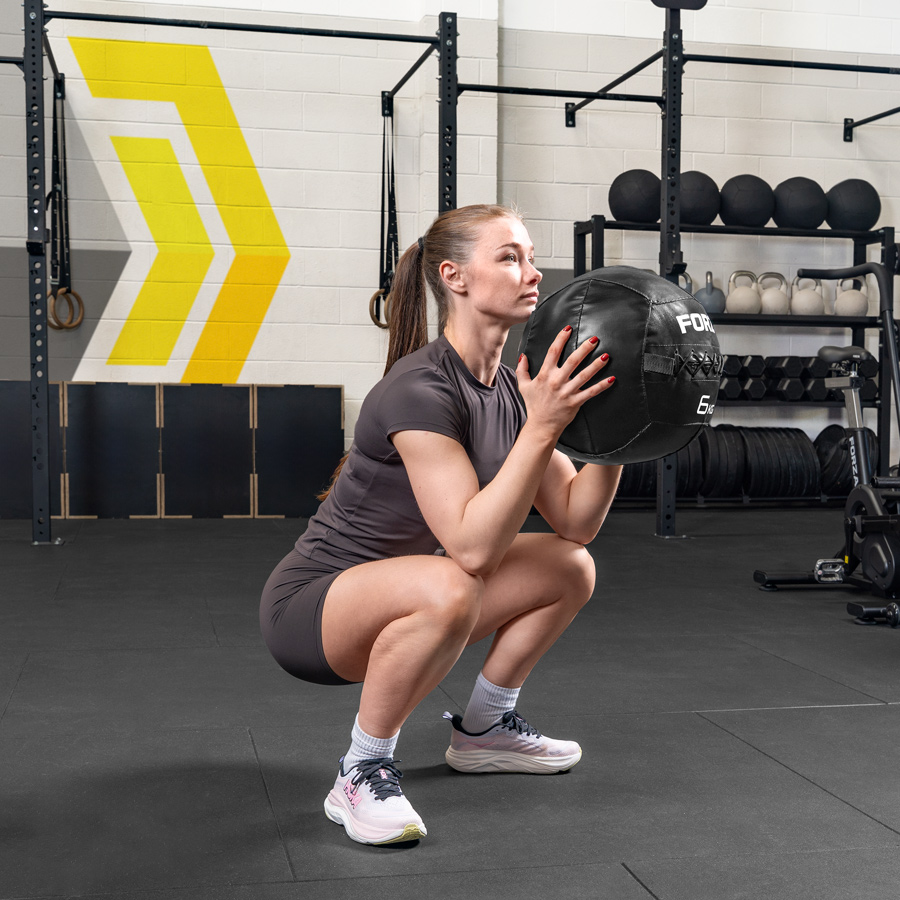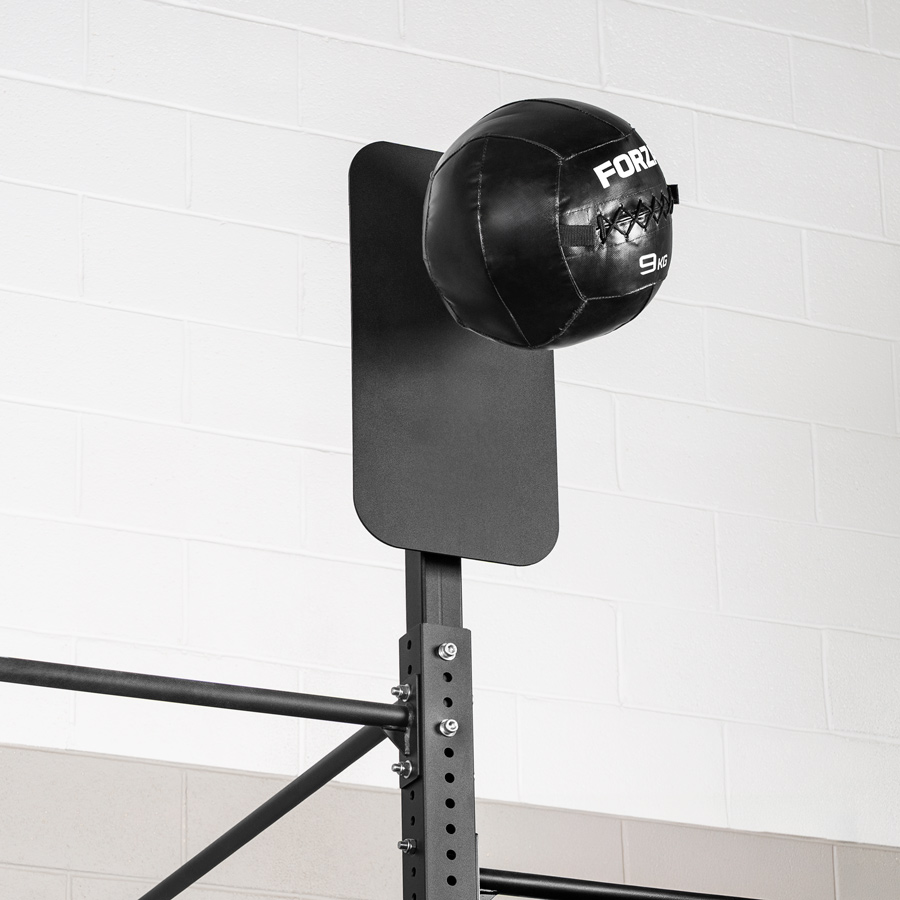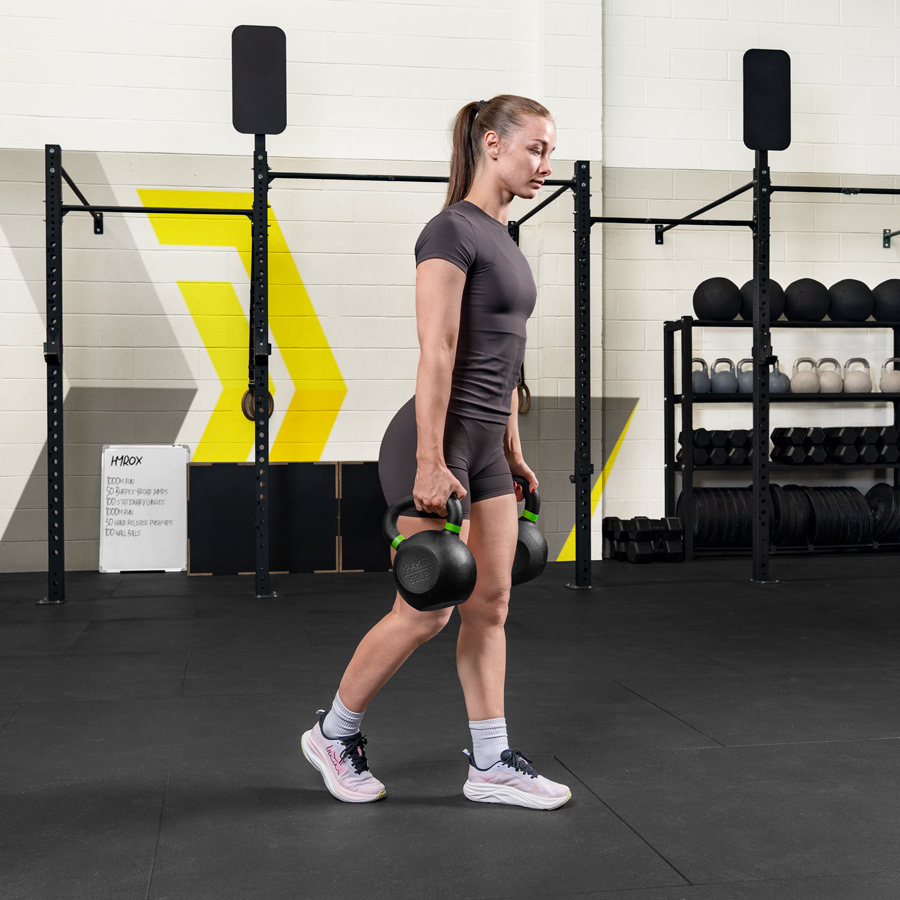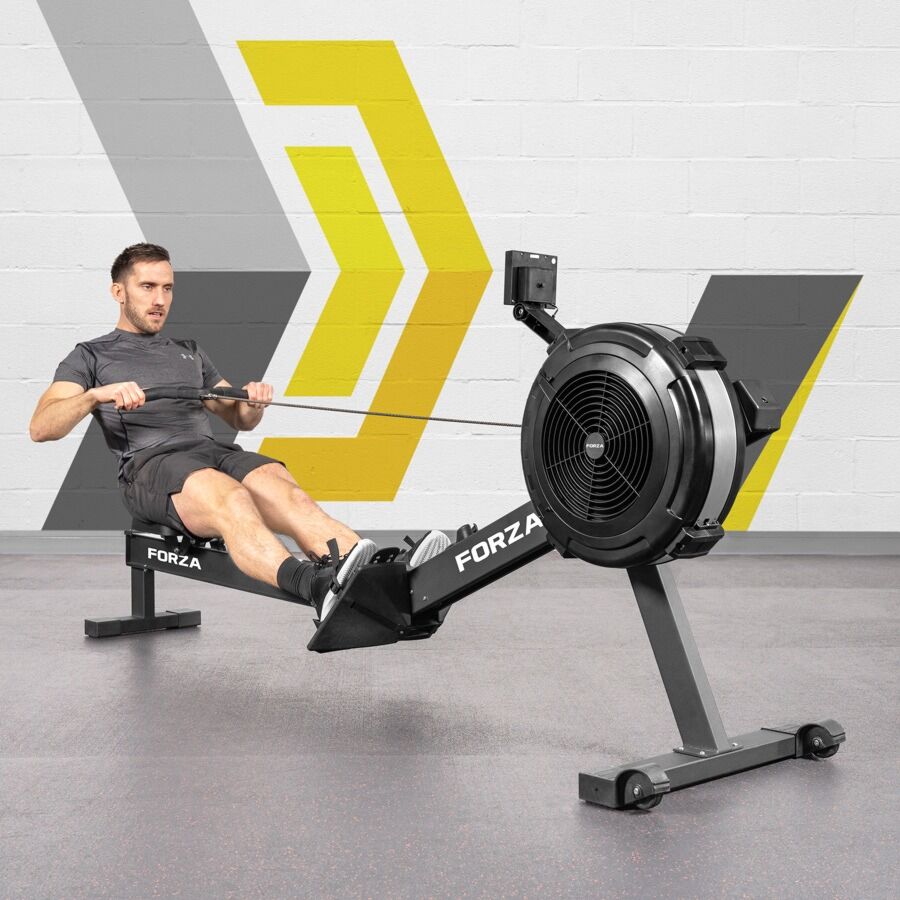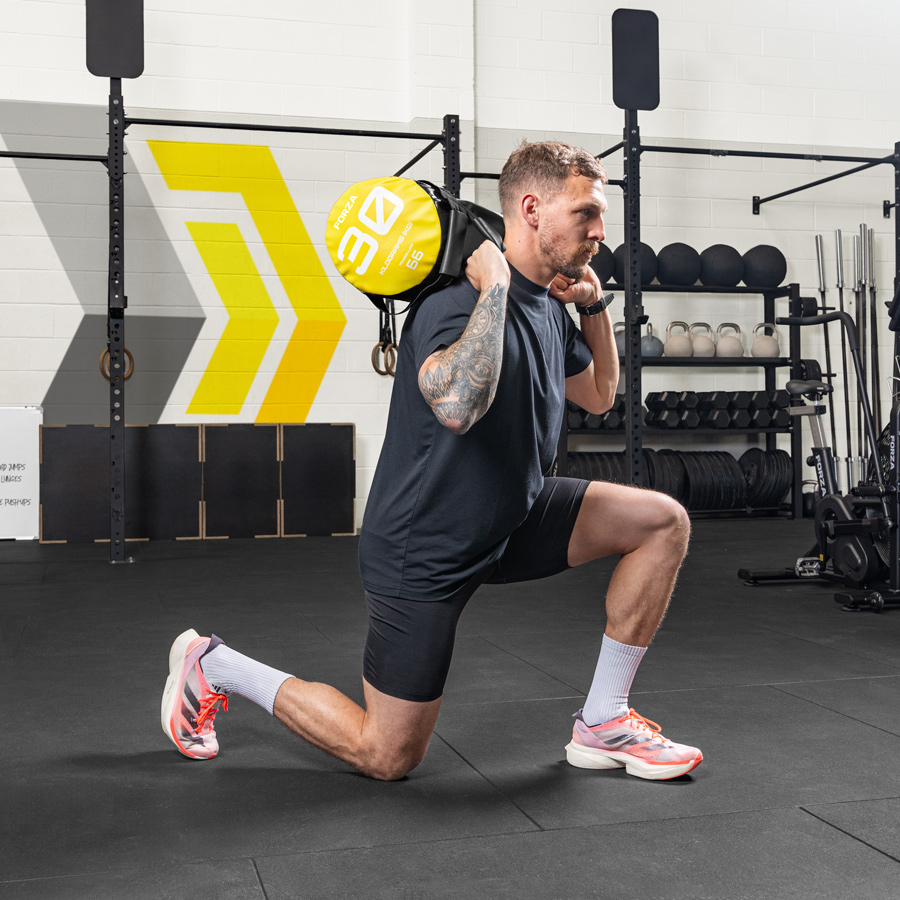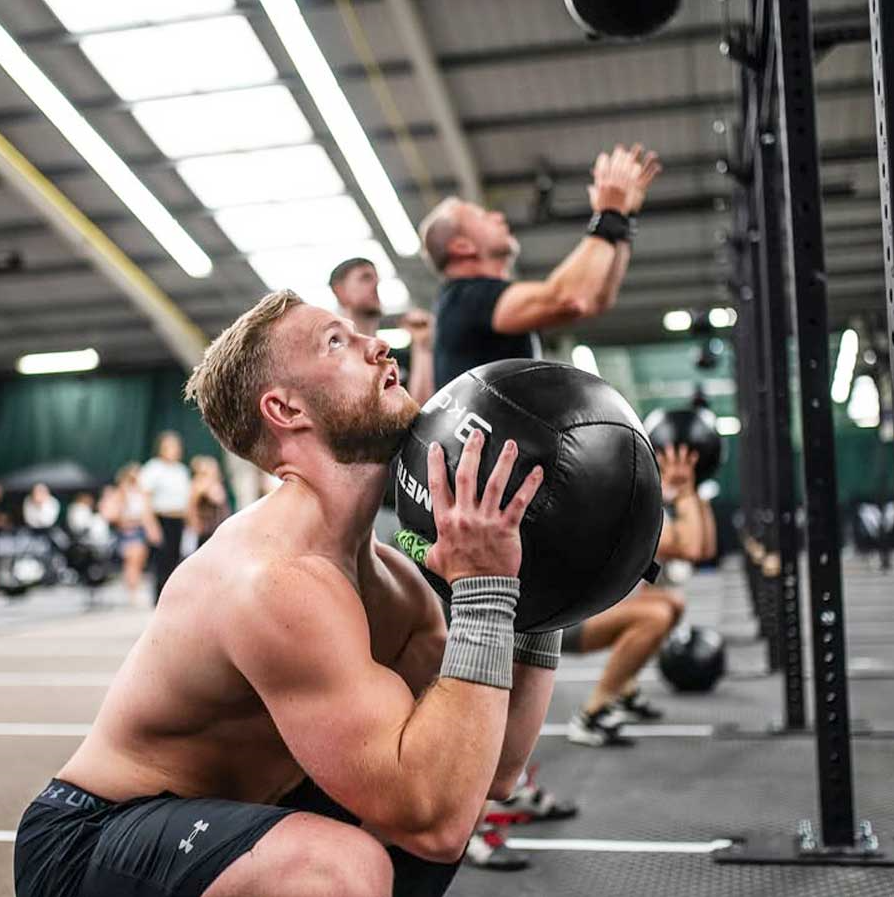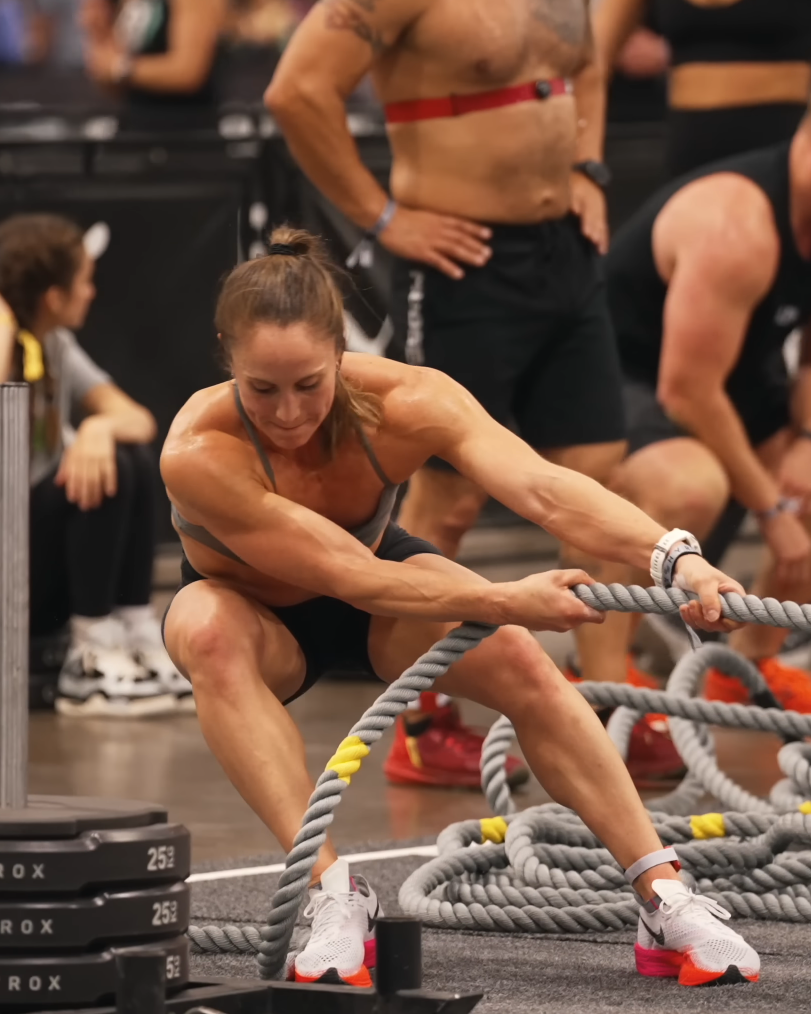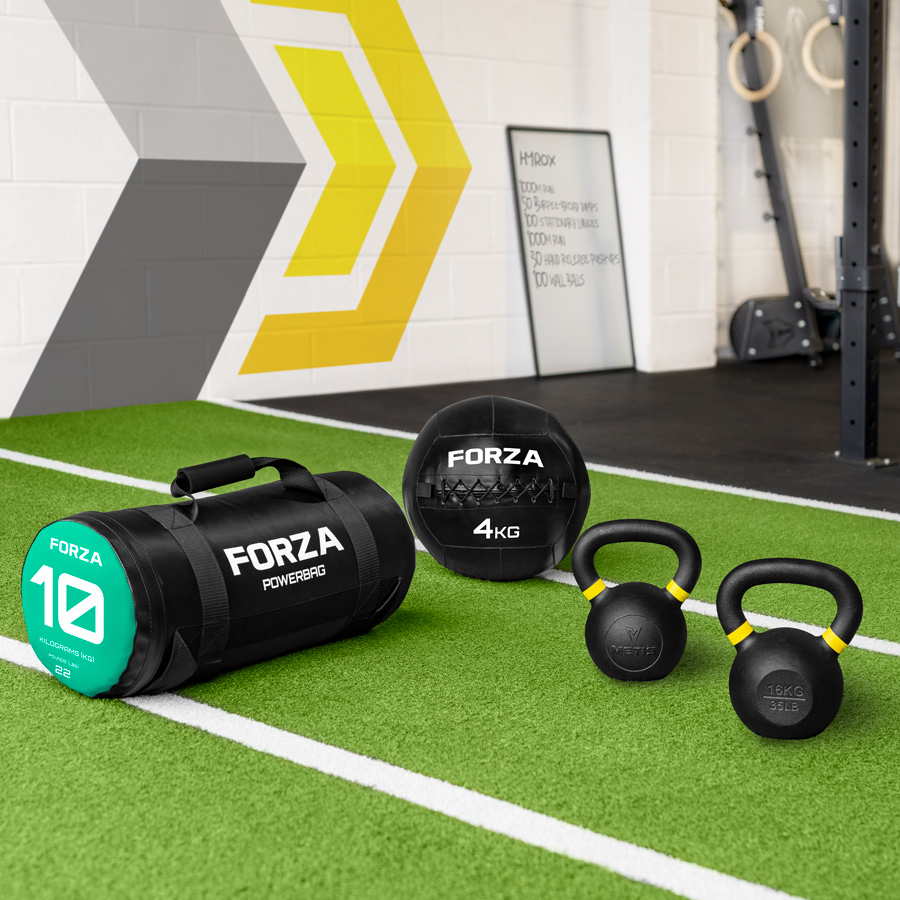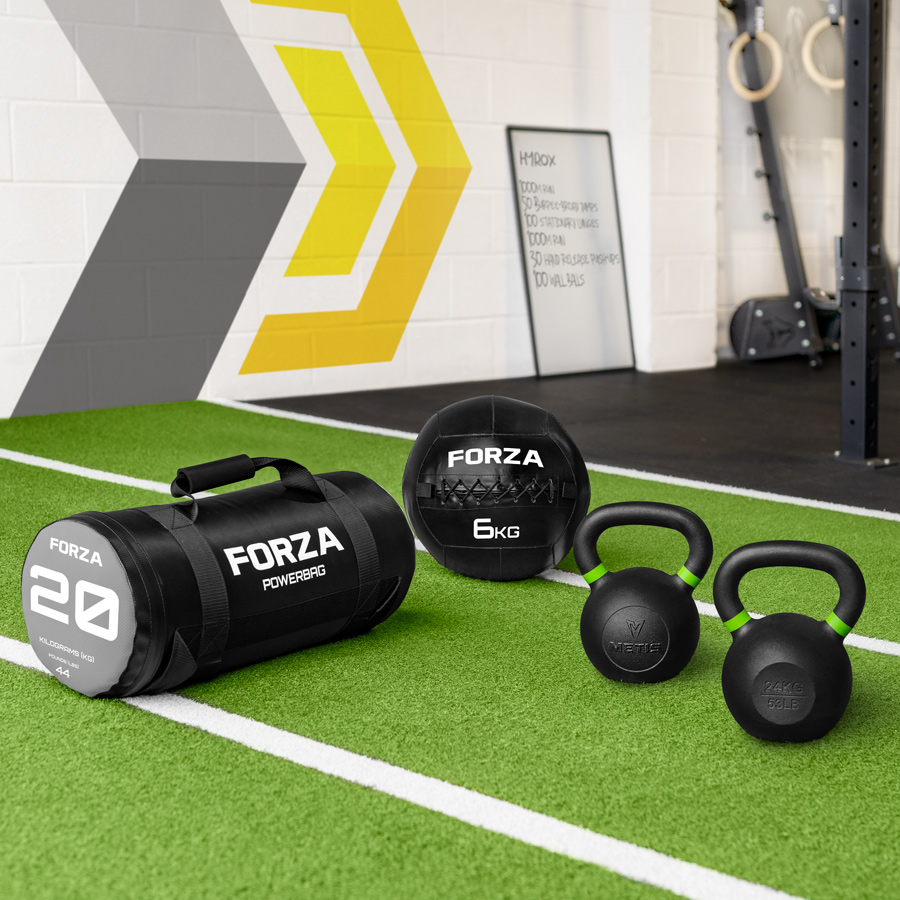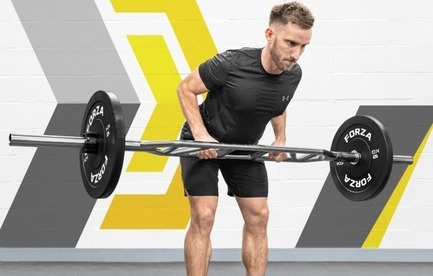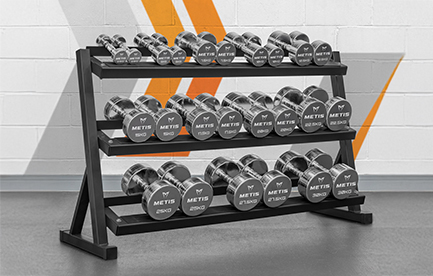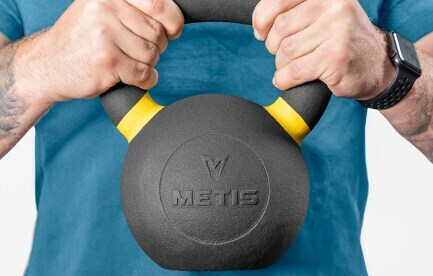

The Complete Guide To HYROX
HYROX training, workouts & events explained
Designed to appeal to as many people as possible, HYROX has taken the fitness industry by storm in recent years. A blend of functional strength and cardiovascular exercises, if you want to get in great shape, then signing up to your local class is a great start.
Founded by Christian Toetzke and German Olympic field hockey player Moritz Fürste, HYROX gyms offer a supportive community and unique competition format. Whilst the exercises are certainly challenging, they are also touted as being less complex, with a lower barrier to entry and lower risk of injury relative to similar exercise programmes like CrossFit.
To learn more, you can either read the guide from top to bottom, or navigate to a specific topic using the links in the list below:
- Introduction to HYROX
- What is HYROX?
- HYROX vs CrossFit
- HYROX Competition Format
- Common HYROX Penalties
- HYROX Categories and Age Groups
- How Do You Train for HYROX?
- Beginner HYROX Style Programme
- Intermediate HYROX Style Programme
- HYROX Exercise Technique & Form
- HYROX Training at Home
- HYROX FAQs
- Conclusion
Going beyond the individual PBs and muscle gains on offer from a traditional gym, the HYROX format also provides a complete structure for training and competition that is well rounded and shared by all members of the gym.
Great for physical and mental health, the standardised protocol of HYROX removes many of the complications and variables associated with regular gyms, providing a supportive community setting that keeps people coming back for more.
Challenging and extremely effective when it comes to building fitness and an athletic physique, HYROX is demanding physically but easy to train for in a sense, as the event format rarely changes. Competitors can turn up to classes without having to plan out their own individual training sessions, and benchmark their progress and results against other participants worldwide.
In this guide we will take an in-depth look at HYROX and HYROX equipment, examining why it is so popular, effective and addictive (in a good way!). By the end you’ll also have enough information to be able to decide whether HYROX is the exercise and gym format that\'s right for you, and what to expect during your first session.
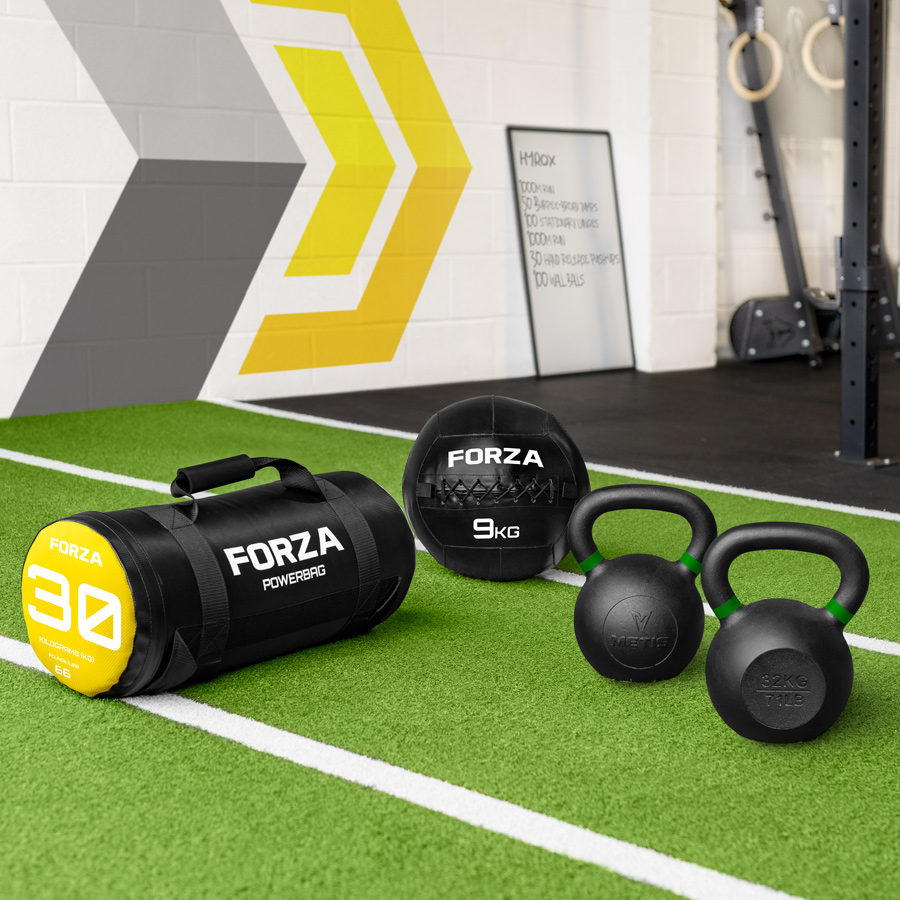

What is HYROX?
HYROX could be described as -
A standardised, global fitness programme and competition, that combines endurance running with functional strength exercises. Research and case studies suggest that top HYROX athletes require exceptional levels of endurance - with cardiovascular fitness, muscular endurance and explosive power important for top level performance.
If you\'re wondering what "HYROX" stands for - unofficially; according to a number of articles and social media videos - "HYROX" is said to be an abbreviation of the phrase "Hybrid Rockstar". Hybrid training is a combination of exercise modalities, for example strength, power and endurance training, combined into a single exercise programme.
The format for official HYROX events/races includes 8 rounds, with each round consisting of a 1km run plus 1 functional strength exercise.
Whilst the programme and the exercises used in a class setting can vary, the structure of the competitions is the same for all events around the world.
The exercises at HYROX events include:
- SkiErg - 1km
- Sled Push - 50m
- Sled Pull - 50m
- Burpee Broad Jumps - 80m
- Rowing machine - 1km
- Farmers’ Carry - 200m
- Sandbag Lunges - 100m
- Wall Ball Throws x 100
In addition, there is also a 1km run, before each exercise - which is usually referred to as each “workout” or “station”.
The weight used for each exercise can differ based on the division - more on divisions, categories and age groups later in the guide.
What are the Pros and Cons of HYROX?
Designed to be inclusive and accessible to people of all fitness levels, the popularity of HYROX seems attributable to a wide number of factors. Whilst the exercises are relatively simple to learn in terms of technical proficiency, HYROX offers a range of benefits and serves as a highly effective and enjoyable way to build functional strength and fitness for sport, wellbeing and/or aesthetic reasons.
Pros
- Accessible to nearly all fitness levels
- Combines strength and fitness training
- Standardised events allows global comparisons
- Clear goals and regular events to work towards
- Gyms are said to offer a really supportive community
- Lower risk of injury compared to similar modalities like CrossFit
Cons
- Can be physically demanding for beginners
- Often more expensive than traditional gyms
- Competitions and communities may not appeal to everybody
- Less challenging & less varied than CrossFit
Is HYROX Like CrossFit?
HYROX is similar to CrossFit in terms of the community it creates within the gym setting and the fitness goals that people have.
There is also a big crossover in terms of the exercises carried out in HYROX and CrossFit gyms. Whilst all the official exercises used in HYROX events will make an appearance in a CrossFit class or race at some point; you will not find the more technical CrossFit exercises like Olympic Lifts and gymnastics movements in a HYROX class.
In addition, whilst HYROX competitions and workouts tend to vary only slightly and are based on the official 8 HYROX exercises, CrossFit classes and competitions vary greatly, and consist of dozens of potential exercises.
CrossFit is actually designed to vary constantly, and workouts often consist of exercises that require a high level of technical ability and strength or fitness. These exercises include Olympic lifts like clean and jerks, walking handstands and gymnastic ring muscle ups.
HYROX has gained popularity alongside CrossFit, because it offers many of the same benefits, with a lower barrier to entry. Whilst the exercises in HYROX are challenging, they can be done by almost anybody with only a few hours, or even minutes of coaching and explanation.
Advanced CrossFit exercises however, can take years to master; and it can take a long time just to develop the correct technique.
Although research shows that injury levels are similar to other sports and actually lower than traditional military PT, CrossFit also has a bad reputation in relation to injuries. With classes often supervised by 1 or 2 instructors, per 20 or so clients/participants; attempting to teach highly technical and potentially dangerous exercises like snatches and clean & jerks; some fitness experts & enthusiasts think the classes are potentially dangerous.
Although the safety of CrossFit is still fiercely debated online, there are reports in scientific journals stating that the injury rate per year is around 30%. Whilst these studies rarely state the rehab and recovery time from such injuries, many are said to be quite serious, with common injuries including dislocated elbows and rotator cuff (stabilising shoulder muscles) tears.
HYROX does not have the same negative reputation regarding injuries. Although participants, especially keen competitors and those just starting, may be at risk of overuse injuries, because the movements are less complex, anecdotally at least - there appears to be less acute injuries like torn muscles and tendons.
Former Olympic Champion Cyclist Nikki Brammeier for example, summarises the toughness and benefits relative to the injury risk like this:
"Hyrox is very demanding on your body, so you have to keep your hard days hard, your easy days easy and your rest days as recovery. However with Hyrox, done right, the injury risks of adding it into training are pretty low,"
The table below summarises the key differences between HYROX and CrossFit
| HYROX vs CrossFit | ||
|---|---|---|
| Feature | HYROX | CrossFit |
| Definition | Fitness race with runs and workouts. | High-intensity functional training style. |
| Workout Style | Endurance with steady cardio and strength. | Varied, high-intensity, skill-based workouts. |
| Competition Format | Fixed race format. | Changing events and workouts. |
| Exercises | Sled push, row, burpees, wall balls, etc. | Lifting, gymnastics, cardio, kettlebells. |
| Running Requirement | Yes – 8 x 1km runs. | Appears in some workouts. |
| Weights Used | Fixed per category. | Varies by workout. |
| Variations/Modifying | Open, Pro, Doubles, Relay. | Rx, Scaled, Adaptive. |
| Injury Risk | Lower – fewer complex moves. | Higher – lifts and intensity. |
| Training Focus | Endurance and functional strength. | All-round fitness and skills. |
| Scoring System | Fastest time wins. | Varies – reps, weight, time. |
| Who It’s For | Endurance & fitness fans. | Power & functional fitness fans. |
| Gym Requirements | Any gym with space/equipment. | Usually needs a CrossFit box. |
If you enjoy endurance based fitness, with a structured training programme and competition, then HYROX is a good choice.
If you prefer high-level, varied workouts and enjoy learning new skills, then CrossFit might be your preferred workout and exercise format.
With isolation and loneliness on the increase across the country, both HYROX and CrossFit tick a number of proverbial boxes when it comes to wellbeing - both mentally and physically. Offering supportive, worldwide communities that are brought together with a shared interest and goals, people build lasting friendships and gym sessions become rewarding and fulfilling experiences.
| HYROX vs CrossFit – Pros & Cons | ||||
|---|---|---|---|---|
| Aspect | HYROX – Pros | HYROX – Cons | CrossFit – Pros | CrossFit – Cons |
| Accessibility | Easy to learn moves. | Needs sleds, rowers, etc. | Scalable for any level. | Some moves are complex. |
| Injury Risk | Lower risk from simple moves. | Overuse possible with volume. | Builds full-body strength. | Risk from lifts & intensity. |
| Cardio & Endurance | Great for aerobic fitness. | Less focus on speed power. | Boosts cardio & strength. | Endurance less emphasised. |
| Strength | Endurance with moderate weight. | Lacks heavy strength work. | Strong Olympic/powerlifting. | Can lack balance in focus. |
| Variety & Fun | Simple & structured format. | Repetitive for some. | Endless workout variety. | Unpredictable for planners. |
| Competition | Clear time-based scoring. | Less skill progression. | Lots of events and records. | Unpredictable and intense. |
HYROX Competition Format
What is a HYROX Competition?
A HYROX meet or competition, is a large athletic event, usually held indoors, that consists of 8 x 1km runs, and 8 functional strength exercises that take place at a ‘station’ in between each 1km run.
Amateur competitors take approximately 1hr 45mins, to 3 hrs to complete the course.
Top professional HYROX athletes often finish the race in under an hour, with the current men\'s world record in the Pro division set by Hunter McIntyre at 53 minutes and 22 seconds (at the time of writing).
At the time of writing, the Women\'s Pro HYROX world record is held by Lauren Weeks, with a time of 56 minutes and 23 seconds.
A great format for testing overall fitness, HYROX events are designed to test both endurance and strength. Accessible to many and relatively easy to learn, the progression and challenges the exercise format offers are virtually endless.
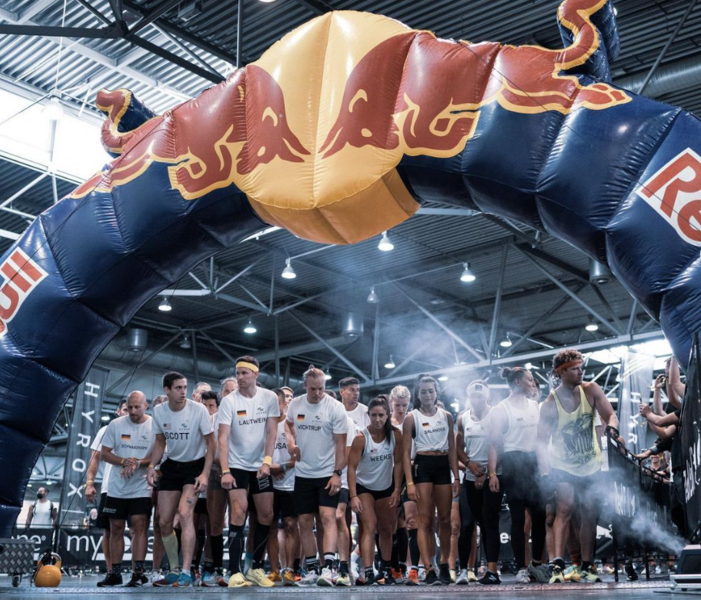

What Does a HYROX Competition Consist Of?
Every HYROX race follows this structure*:
- 1 km Run
- SkiErg (1,000m)
- 1 km Run
- Sled Push (Heavy sled push over a set distance)
- 1 km Run
- Sled Pull (Heavy sled pull over a set distance)
- 1 km Run
- Burpee Broad Jumps (Advancing forward with burpee jumps)
- 1 km Run
- Rowing (1,000m)
- 1 km Run
- Farmers Carry (Weighted carry over a set distance)
- 1 km Run
- Sandbag Lunges (Walking lunges with a sandbag)
- 1 km Run
- Wall Balls (High-rep medicine ball throws)
*There is also some additional running in between stations, in the transitional areas known as the ROX Zones; and there is a short sprint from the final station (Wall Balls) to the finish line. Expect to run an additional 500m-2km depending on the event\'s location.
What Are The Main Rules of HYROX?
The main rules to be aware are listed below:
All athletes must complete 8 x 1km running intervals and 8 workout stations in the correct sequence
The exercises must be performed in accordance to the HYROX movement standards
Sled pushes and pulls must cover the full distance
Burpee broad jumps must be executed as a continuous movement. The feet must leave the ground at the same time.
During the wall ball station, the ball must hit the correct target. If missed, the rep doesn’t count towards the total.
Athletes must stay in any designated lanes or areas
Time penalties are added for not following the correct movement patterns and rules


Common HYROX Penalties
Sled Push & Pull
Not moving the sled fully through the full distance - Redo the rep
Dragging the sled incorrectly - time penalty
Touching the sled base or the weights on the sled
Burpee Broad Jumps
Not extending the hips fully - redo the rep
Not jumping with 2 feet leaving the floor at the same time - redo the rep
Not placing hands directly in front of the feet - redo the rep
Wall Ball
Ball doesn’t hit the target - redo the rep
Running 1km
Not completing the full 1km - time penalty
Sandbag Lunges
Putting the sandbag on the floor at any point - time penalty
Knee not touching the floor - redo the rep
Farmer’s Carry
- Not putting kettlebells back in the designated area - time penalty
General violation
Skipping reps or distance - time penalty or disqualification
Not listening to judges instructions - time penalty, redo or disqualification
Distance penalties can be issued for any workout, and range between 5 and 10m
What Are The Main HYROX Categories and Age Groups?
The table below breaks down the main categories and age groups that are currently used in HYROX competitions.
| HYROX Categories | |||
|---|---|---|---|
| Category | Description | Format | Who It\'s For? |
| HYROX Open | Standard weights & distances. | Individual | General fitness & first-timers. |
| HYROX Pro | Heavier weights, more challenge. | Individual | Elite & experienced athletes. |
| HYROX Doubles | 2 share stations, run together. | Team (2) | Friends, couples, partners. |
| HYROX Relay | 4 share workout – 2 runs each. | Team (4) | Beginners & group entries. |
Here is a breakdown of the weights and distances for the 8 exercise stations, each of which is preceded by a 1km run.
Each type of HYROX race is split by gender, the number of competitors, age group, and ability level. Ability levels are split into the "open" divisions and the "pro" divisions. To qualify for the pro races, you need to achieve a top position in the open.
HYROX Individual Categories: Weights & Distances
HYROX Individual Divisions
Women
Women Pro
Men
Men Pro
HYROX Individual Age Groups
Under 24 (min age is 16 on day of the race) | 25-29 | 30-34 | 35-39 | 40-44 | 45-49 | 50-54 | 55-59 | 60-64 | 65-69 | 70-74 | 75-79 | 80-84 | 85-89
HYROX Doubles Races
HYROX Doubles Divisions
Women
Men
Mixed
Women Pro
Men Pro
HYROX Doubles Age Groups*
Under 29 | 30-39 | 40-49 | 50-59 |60-69 | 70+
*There is no 60-69, or 70+ age group for the Pro divisions
| HYROX DOUBLES WEIGHTS & DISTANCES | ||||
|---|---|---|---|---|
| Workout | Women | Men & Mixed* | Women Pro | Men Pro |
| SkiErg | 1000m | 1000m | 1000m | 1000m |
| Sled Push 4x12.5m | 102kg incl sled | 152kg incl sled | 152kg incl sled | 202kg incl sled |
| Sled Pull 4x12.5m | 78kg incl sled | 103kg incl sled | 103kg incl sled | 153kg incl sled |
| Burpee Broad Jumps | 80m | 80m | 80m | 80m |
| Rowing | 1000m | 1000m | 1000m | 1000m |
| Farmers Carry 200m | 2 x 16kg | 2 x 24kg | 2 x 24kg | 2 x 32kg |
| Lunges 100m | 10kg | 20kg | 20kg | 30kg |
| Wall Balls | 100 reps w/ 4kg | 100 reps w/ 6kg | 100 reps w/ 6kg | 100 reps w/ 9kg |
*In Mixed doubles, men and women use the same weights and distances.
HYROX Relay Races
HYROX Relay Divisions:
Women
Men
Mixed
HYROX Relay Age Groups
Under 40 | Over 40
| HYROX RELAY WEIGHTS & DISTANCES | ||
|---|---|---|
| Exercise | Female* | Male* |
| SkiErg | 1000m | 1000m |
| Sled Push 4x12.5m | 102kg incl sled | 152kg incl sled |
| Sled Pull 4x12.5m | 78kg incl sled | 103kg incl sled |
| Burpee Broad Jumps | 80m | 80m |
| Rowing | 1000m | 1000m |
| Farmers Carry 200m | 2 x 16kg | 2 x 24kg |
| Lunges 100m | 10kg | 20kg |
| Wall Balls | 100 reps, 4kg | 100 reps, 6kg |
*In the
How Do You Train for HYROX?
As the only way to build fitness for a specific exercise, or 9 exercises in the case of HYROX, is to actually carry out and do the exercises - the best way to train for HYROX, is to actually do HYROX.
A good starting point is to contact your local HYROX affiliated gym and see if they do classes for beginners. Many gyms hold HYROX INTRO classes that are shorter and/or easier in terms of the intensity of the classes.
If budget allows, the ideal starting point would be to pay for a personal or small group training session, so the instructor can coach you on technique and closely monitor how you are feeling in terms of the perceived rate of exertion, heart rate, etc.
Either way, contact the gym before attending, and even if you join a ‘normal’ session, the instructor should keep a close eye on you during your first few sessions, and give you the option to take additional rest breaks.
If you want to build a ‘base’ of fitness, before your first HYROX class, adhering to a running programme could help you to exercise at a higher intensity and transition much easier than jumping straight into a high-intensity class from a completely sedentary lifestyle.
If you’ve been living a sedentary lifestyle for 6 months or more, then you may want to slowly build up to a 1km run. Or begin with a 1 km fast walk. Over the course of a week or two, try to build up to longer walks, or if possible, a higher number of 1km walks or runs, interspersed with a few minutes of rest.
Adding bodyweight exercises including press ups and squats will also help you to transition to a HYROX class with a lower risk of injury and an easier recovery. If you have access to a gym or exercise machines like a ski erg and a rowing machine, then add those to your regime too.
If you are a healthy body weight, you may wish to change the walking to running in the table/programme below.
Exercise at your own risk. Consult a doctor or health practitioner before undertaking a new exercise programme
**Always include a cool down after a workout, ideally including foam roller exercises, low intensity cardio and stretching/mobility work**
If you have done very little or no exercise for months or years and don\'t feel comfortable going straight into a HYROX training programme, below is a gentle training programme, that could be used as a gradual introduction to a more active lifestyle.
| COUCH TO BASIC FITNESS PROGRAMME | |||||||
|---|---|---|---|---|---|---|---|
| Week | Day 1 | Day 2 | Day 3 | Day 4 | Day 5 | Day 6 | Day 7 |
| Week 1 | Walk & Strength: 20 min brisk walk, 10 x squats, 10 x press ups* | Walk: 20 min medium pace | Walk Intervals: 3 x 5 min fast walks with 2 min slow in between | Rest | Long Walk: 45 min brisk walk | Strength: Max squats in 1 min, max press ups in 1 min | Rest or Stretch |
| Week 2 | Walk & Strength: 25 min brisk walk, 15 x squats, 10 x press ups | Walk: 20 min medium pace | Walk Intervals: 4 x 5 min fast with 1 min slow in between | Strength: Max squats in 1 min, max press ups in 1 min | Long Walk: 45 min brisk walk | Strength: Max squats in 1 min, max press ups in 1 min | Rest or Stretch |
| Week 3 | Walk & Strength: 25 min brisk walk, 15 x squats, 20 x crunches | Walk: 20 min medium pace | Walk Intervals: 4 x 5 min fast with 1 min slow in between | Strength: Max squats in 1 min, max press ups in 1 min | Long Walk: 50 min brisk walk | Strength: Max squats in 1 min, max press ups in 1 min | Rest or Stretch |
| Week 4 | Walk & Strength: 25 min brisk walk, 20 x squats, 25 x crunches | Walk: 20 min medium pace | Walk Intervals: 5 x 5 min fast with 1 min slow in between | Strength: Max squats in 1 min, max press ups in 1 min | Long Walk: 50 min brisk walk with backpack** | Strength: Max squats in 1 min, max press ups in 1 min | Rest or Stretch |
*If you can\'t do \'full\' press ups, try kneeling press ups, or press ups against a wall
**Fill the backpack so it weighs between 5k-10kg. Alternatively use a weighted vestBy building a foundation of fitness before your first session, you’ll also tend to feel fully recovered, and less sore, in a shorter space of time. If you are a member of a gym, and you’re looking to do some kind of programme that is similar to, or will transfer ‘well’ to a HYROX class, then the 2 programmes below, should develop a comparable level and type of fitness.
For those who have been sedentary for 3+ months, focusing on movement quality, endurance, and strength foundation.
For those looking to start HYROX training at home, or at a \'normal\' commercial gym, the programme outlined below could be a good starting point:
| BEGINNER HYROX GYM PROGRAMME (3 DAYS A WEEK) | ||
|---|---|---|
| EXERCISE | SETS × REPS / DISTANCE | NOTES |
| DAY 1 – STRENGTH & CONDITIONING | ||
| Treadmill Walk/Run | 3–5 min warm-up | Gradual pace ↑ |
| SkiErg Machine | 3 × 250m | Moderate pace, mimic race |
| Goblet Squats | 3 × 12 | Light KB/DB |
| Marching Farmer\'s Walks | 3 × 20 steps | Hold mod-heavy KB/DB |
| Seated Shoulder Press | 3 × 12 | DB, slow & controlled |
| Band/Cable Sled Push* | 5 × 2m | Low cable or band tension |
| Plank Hold | 3 × 20 sec | Increase duration |
| Treadmill Walk/Run | 1 km | Build endurance |
| DAY 3 – ENDURANCE & FUNCTIONAL STRENGTH | ||
| Rowing Machine | 1,000m | Warm-up |
| Step-Ups (Box/Bench) | 3 × 10 per leg | Bodyweight or DB |
| Lunges | 3 × 10 per leg | Forward/walking, add weight |
| Dumbbell Deadlifts | 3 × 12 | Light-mod weight |
| Burpees + Plyo Jump Superset | 3 rounds: 5 burpees + 5 jump squats | High-intensity |
| Core Work (Sit-ups/Dead Bugs) | 3 × 15 | Controlled moves |
| Treadmill Walk/Run | 1 km | Build stamina |
| DAY 5 – HYBRID TRAINING & CARDIO | ||
| Rowing Machine | 1,000m | Warm-up |
| Burpee & Jumping Lunge Superset | 3 rounds: 6 burpees + 6 lunges per leg | Explosive focus |
| Dumbbell Floor Press | 3 × 12 | Bench or floor |
| Kettlebell Swings | 3 × 15 | Hip drive focus |
| Farmer\'s March on Spot | 3 × 30 sec | Heavy KB/DB, strong core |
| Cable Sled Pull Alt. | 3 × 10 pulls | Rope on low cable, backward pulls |
| Treadmill Walk/Run | 1 km | Increase speed if able |
*With gym manager permission – anchor a band (ideally a FORZA Multi-Use Band) at one end & hold/wrap around waist – walk forwards/back 2m. Alternatively, use cable machine. If neither possible, treadmill max incline walk 5 mins.
The programme above factors in 4 rest days per week - which is typical for a beginner starting a relatively high-intensity training programme
For those who already go to the gym but need HYROX-specific conditioning using standard gym equipment; the training programme below will help you develop fitness and technique that will make the transition to HYROX easier. The training programme assumes that your gym does not contain a sled:
| Intermediate HYROX Gym Programme (3 Days a Week) | ||
|---|---|---|
| Exercise | Sets x Reps/Distance | Notes |
| Day 1 – Strength & Power | ||
| Treadmill Run | 5 mins | Gradual pace increase |
| SkiErg Machine | 500m | Warm-up effort |
| Rowing Machine | 1000m | Steady tempo |
| Barbell Back Squat | 4 x 10 | Moderate-heavy weight |
| Farmer\'s March on the Spot | 3 x 45 seconds | Heavy KBs |
| Military Press | 4 x 10 | Barbell or Dumbbells |
| Hanging Knee Raises | 3 x 12 | Engage core |
| Treadmill Run | 1km | Aim for pace progression |
| Day 3 – Functional Strength & Engine | ||
| SkiErg Machine | 500m | Warm-up |
| Rowing Machine | 1000m | Race pace effort |
| Step-Ups w/ Dumbbells | 3 x 12 per leg | Increase weight over time |
| Lunges | 3 x 12 per leg | Hold dumbbells/kettlebells |
| Dumbbell Deadlifts | 4 x 10 | Moderate-heavy weight |
| Burpees w/ Vertical Jump | 3 x 8–10 | Explosive effort |
| Hanging Knee Raises | 3 x 12 | Scaled up core engagement |
| Treadmill Run | 1km | Build running stamina |
| Day 5 – HYROX Simulated Circuit | ||
| SkiErg Machine | 500m | Moderate-fast pace |
| Rowing Machine | 1000m | Consistent rhythm |
| Kettlebell Swings | 3 x 20 | Power through hips |
| Burpees w/ Vertical Jump | 3 x 10 | Replaces leg press/Bulgarian squats |
| Dumbbell Clean & Press | 3 x 12 | Alternative to wall balls |
| Farmer\'s March on the Spot | 3 x 45 seconds | Heavy KBs |
| Hanging Knee Raises | 3 x 12 | Midline control |
| Treadmill Run | 1km | Pacing focus |
HYROX Injury Prevention
Part of the appeal of HYROX is that it is less likely to result in injury than similar exercise modalities like CrossFit. However, as with any form of exercise; there is still a risk of injury.
Leading causes of injuries include -
Overtraining - doing too much, too hard, too early
Pulled muscles - often from explosive movements like jumping
Tendon & ligament strains and inflammation
- Dehydration - leading to impaired reactions & flexibility
To reduce the risk of injury, you can ensure that you warm up properly before each HYROX session, progress gradually and focus on exercising with the correct technique & form.
If you do incur an injury, or you have an existing issue, you may be interested in our sports tape which can be used to support joints, muscles, and connective tissue.
However, it is important that you consult a qualified sports therapist, physiotherapist, and/or your GP to ensure that you are not going to make any injuries worse by continuing to exercise using HYROX or any other exercise protocol.
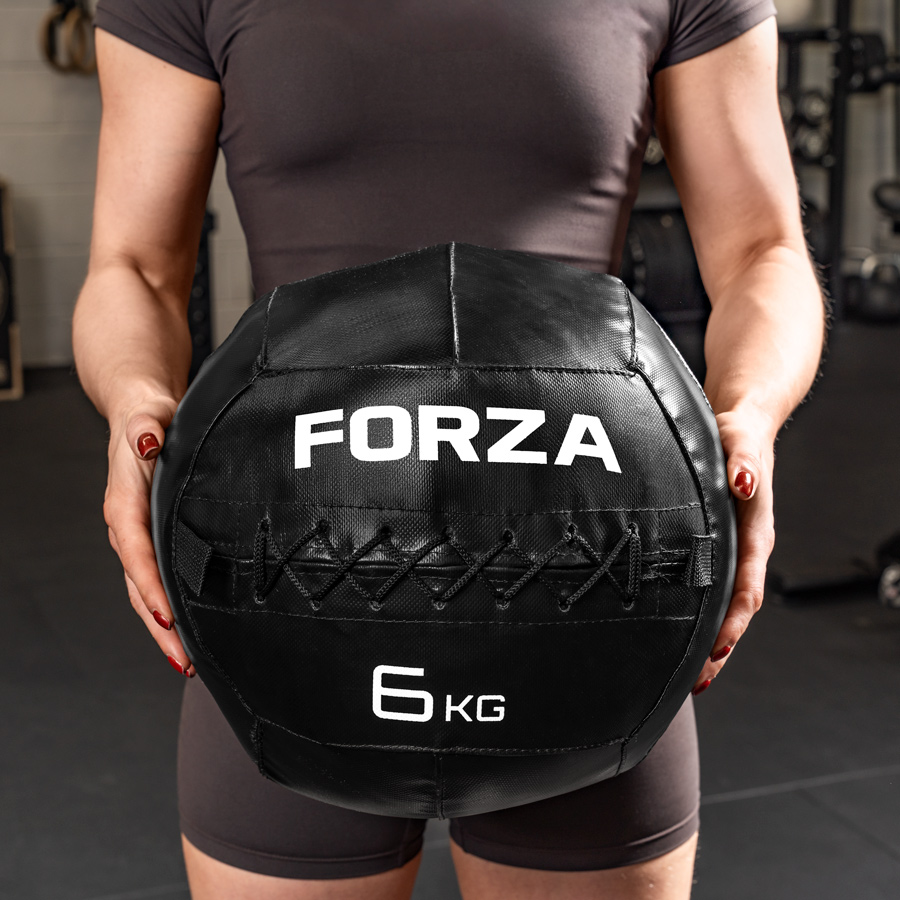

Warm Up Properly
A warm up, literally warms up the muscles, tendons and ligaments, making them more flexible and less likely to become strained or pulled. Whilst a 1km run might be a warm up for a seasoned athlete, for someone with a sedentary lifestyle, this can be a workout in and of itself.
A warm up might include - a brisk walk for 5 minutes, air squats, arm circles and if possible - a sled push with no weight. Contact the gym before your first session and see what the instructor recommends.
Gradual Progression
Arguably the best way to stay injury free, is to stick to a gradual increase in exercise-duration and exercise-intensity over a number of weeks. This will give your body time to adapt to your new programme, with minimal risk of injury.
Ensure that you join a gym with instructors that allow you to build up intensity gradually. Going at it 100% from day 1, is often counterproductive as you greatly increase the risk of injury, and there’s a good chance you’ll be really sore and unable to train for a number of days afterwards. Focus on shorter, less intense, but frequent training sessions to begin with. Ensuring that your technique and form is correct, and don’t worry too much about your time and speed.
Invest in 1 to 1 Coaching
The most likely time to pick up an injury with almost any fitness programme, is within the first year. If you are able to invest in 1 to 1 personal training for your first 4 or 5 sessions with a qualified HYROX trainer, then your injury risk should be dramatically reduced. A good trainer will tailor the sessions to your individual fitness level and monitor your technique and RPE (Rate of Perceived Exertion) very closely, and adapt where necessary.
Technique & Form
Using correct technique and form on each exercise station is key for injury prevention.
Whilst your HYROX trainer will go through all of the technical aspects of each exercise station with you, it can help to familiarise yourself with the basic concepts.
Below we have detailed descriptions of the correct technique on each exercise station.
SkiErg Technique
The SkiErg is a fantastic, low impact whole-body exercise that develops strength and endurance. It also complements and balances prolonged use of the rowing machine, in that it utilises the anterior chain (muscle in the front of the body), whereas the rower uses the posterior chain and hip extension.
Select your resistance / damper level (lever that sits above/top of the fan unit)
Stance
Position your feet shoulder width apart
Stand near the end of the platform/about half a metre from the machine
Pull Movement
Grab the handles so that your knuckles face away from you
Bend forwards at the hips - push hips backwards, so your head dips forwards
Pull the handles - using your arms, upper back muscles and abdominals
Push Movement (As the handles move downwards below the height of your elbows)
Extend your arms using your tricep muscles (back of the arms)
Imagine bringing the handles all the way down to ‘your pockets’/sides of your hips*
Return to Starting Position
Extend/straighten your hips so that you stand back up**
Allow the handles to return to the starting position
*some people prefer to extend the arms a little bit more behind their hips - find what feels good for you.
**Some people use a “snow angel” technique to return to the starting position, with their arms following a wider path with the handles following a wide arc to the sides of their body, rather than in front. This can create more momentum and add a mobility-movement to the exercise, but can confuse many beginners and may not be as efficient as the standard technique.
Common Errors
Pulling before you bend/flex your hips
Using the arms too much & not the hips, core & legs
Straightening arms above the head / reaching too high
Standing too far from or too close to the machine
Pulling hands too far back, behind the body
Rowing Machine Technique
Handle position
Your hands should grip near the outside/ends of the handle. This allows you to pull the handle into the sternum or lower chest, with the elbows out to the side and back. This handle position provides the optimal contraction of and power from the upper back muscles and biceps.
The wrists should be flat/parallel to the floor at all times, with the knuckles of the hands facing upwards.
Set Up
Select damper / resistance level
Set up front straps that your feet go inside, with the straps across the front of your feet
Turn the display/computer on (above the fan) - press "menu" and “just row”
Learn forwards to grab the handles, back straight
Drive Movement
The movement begins with a push off the legs, not a pull of the arms.
Push away from the screen with your feet on the foot plates. Drive through the heels
The seat and the handle should move backwards simultaneously until the legs are extended
Pull
Only pull the handles when the legs are extended
Pull on the handle with both your arms
Lean back slightly as you pull the handle into your sternum/lower chest
Return
The arms move first, then the body, then the legs.
Extend your arms out in front of you; letting the handles drop down slightly will stop your upper body muscles from tiring as quickly
Bend your legs and return back to the starting position
Common Rowing Machine Errors:
Hyper-extending the knees - keep the knees ‘soft’. You want to straighten your legs 99% rather than 100% to prevent hyperextension of the knees which can cause overuse injuries in some people.
Timing errors. For example, pulling with the arms first, instead of pushing with the feet initially.
Sled Push Technique
There are essentially 2 recommended ways to push the sled. These are sometimes called the “Hip & Grip” and “Pivot & Push” techniques.
Hip & Grip Technique
Hands are positioned high on the sled bars - palms facing away
Arms are bent
Eyes should gaze just in front of the sled
Spine in a neutral position
Force comes through the legs, and is transferred from the core and arms
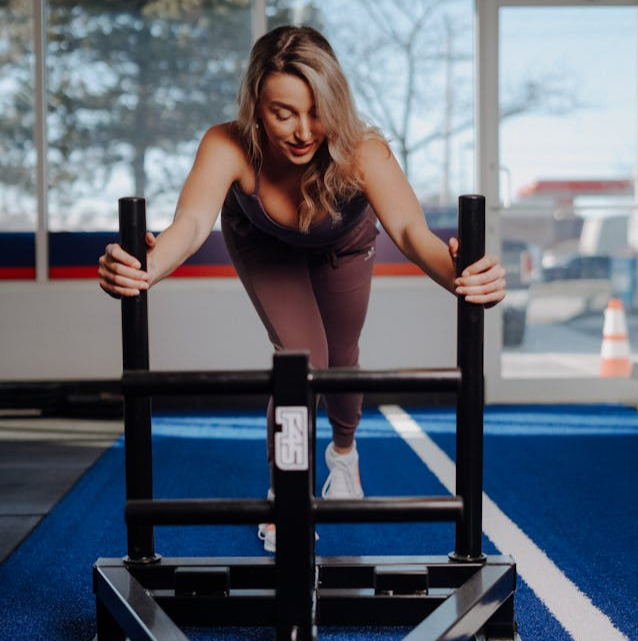

Pivot & Push
Head is over the centre of the sled
Hands grip very low on the sled bars with knuckles face backwards
The underside of the forearms hooks and pushes against the sled bars
Drive through the legs and shoulders and through the sled
Bracing and breathing should be a key focus when practicing the sled push as a beginner.
Bracing through the core is what allows you to transfer force through the legs into the sled.
A training plan that also incorporates some core movements, could help you become proficient at the sled push in a shorter space of time.
The ability to keep breathing properly is important to minimise the fatigue in your legs and body as a whole.
Common Sled Push Errors
Hips too far back
Having the arms fully extended
Sled Pull Technique
Like the sled push, there are 2 popular techniques for the sled pull, these are the hand over hand technique which taxes the upper body, and the lean & step back technique, which predominantly works the lower body.
Lean & Step Back
This technique is arguably slightly easier and more efficient than the hand over hand technique, as the name suggests, you lean back to add tension and take the slack out of the rope, and then step backwards to pull the sled towards you.- Stand as far forwards as you are allowed - in races there is a box you have to stay in.
- Pull the slack out of the rope and gain tension on the rope
- Keep arms straight, put weight into the heels of your feet
- Lean back like you are in a tug of war competition
- Step backwards using small steps so you\'re still leaning back
- Start again when you can’t move backwards anymore
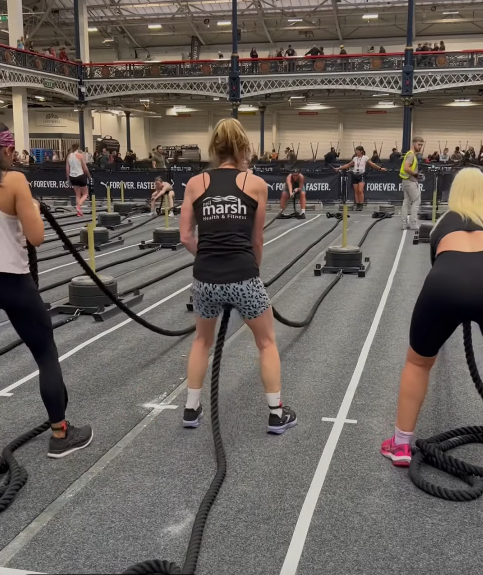

Hand Over Hand Technique
Sometimes people start with this technique, when the rope is fully extended, and move over to the hand over hand technique to finish.
This is a fast and explosive way to pull the sled that requires substantial upper body strength, particularly in the upper back and biceps. It can cause fatigue to build up quickly in the same muscles.- Grip the rope with both hands, one in front of the other
- Take the slack out of the rope and lean back
If your left hand is in front -
- Pull with your left hand, and as you do so, move your right hand forwards and grip the rope.
- Pull with your right hand, and as you do so, move your left hand forward and grip the rope.
- Carry on until you have completed the sled pull.
Common Errors
- Standing too upright.
- Overstriding - taking large steps backwards which loses momentum
Burpee Broad Jumps
- Start by placing your hands on the floor
- Bring your chest to the ground
- Push up and extend your arms
- Push off and either jump or step your feet to a position just behind your hands*
- Swing your arms forwards and jump
*stepping is more controlled but usually slower. Jumping is quicker but more tiring.
Common Errors
Not getting your chest all the way to the floor
Standing fully upright in between jumps - this wastes time and loses momentum
Landing with legs straight, which can damage the knees
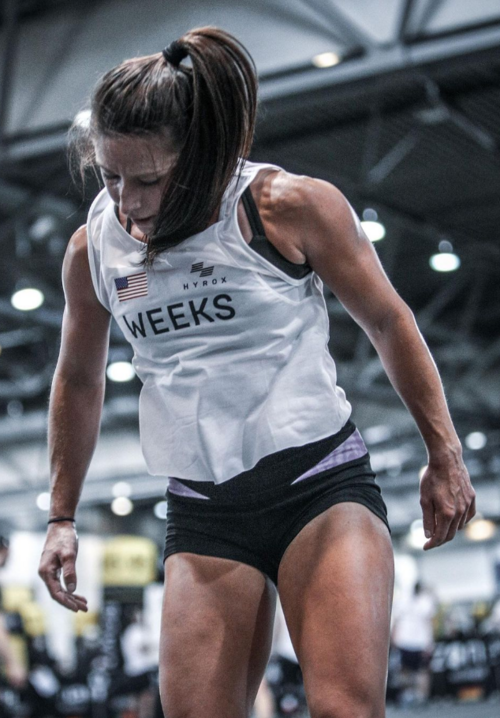

Farmer’s Carry Technique
Think of this like carrying two suitcases or two very heavy bags of shopping. But very quickly!
The farmer’s walk is predominantly a grip training exercise, and it is your grip, not your legs or your core, that is most likely to limit or hinder your time and performance.
Grip
- Many professional and elite Hyrox athletes use a hook grip.
- You put the thumb over the handle first, then grip your thumb (and the handle) with the fingers which will go through the handle and up over your thumb.
Pick up
- Position the kettlebells just wider than shoulder width apart
- Bend your legs
- Keep your arms straight and grab the kettlebell handles
- Look forwards slightly
- Activate your core by bracing your abs and drawing your belly button in
- Activate your upper back by squeezing your shoulder blades together slightly
- Stand up holding the kettlebells with straight arms
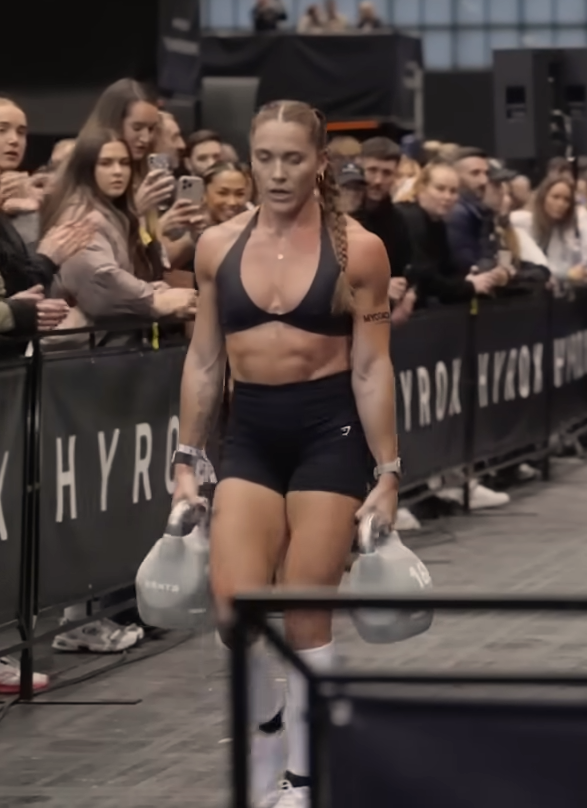

Walking With The Kettlebells
If you are struggling to keep the kettlebells steady, take short consistent steps
If you find the weight relatively easy to walk with, you can lean forwards and take long & quick strides
Common Farmer’s Walk Errors
Slouching of the shoulders
Gripping the kettlebells at different parts of the handles so you’re unbalanced
Going too slow
Sandbag Lunges
Sandbag lunges are great for building your butt/glute muscles and legs. They also give your hip flexors a stretch and are highly functional, transferring strength & endurance to other sports and everyday activities.
Setup
First you need to get the bag on your back.
You can swing the bag onto your shoulders, or lift the bag above your head and then place it on your shoulders.
Keep the bag as low as you can your shoulders, and point your elbows backwards as much as is comfortable (they’ll probably point out a little bit too).
Grip
Most people prefer to use the wide handles. To grip the wide handles, your thumbs will be facing/pointing backwards and your knuckles will point to the ceiling.
Lunge
You can either do a staggered lunge, whereby you step forwards with one leg - let’s say the right leg in this example, with your left knee touching the floor, and then step forward with your left leg, placing your left foot next to the right one.
Or
You can do the step through directly into another lunge. You step forwards with either leg - let’s say the right leg again in this example, the left knee touches the floor, then you step all the way through - placing your left foot about a yard in front of your right one.
Common Sandbag Lunges Mistakes
Over-striding. If your steps are too big and long, it makes it more difficult to touch the floor with your knee, which in turn makes it more difficult to do another lunge from the ‘knee-down’ position.
HYROX Wall Balls Technique
In an event, the wall ball station is usually at the end, meaning you’ll be very tired and the best technique and form might prove difficult to adhere to!
Having said that, if you are able to maintain good form, your movement should be much more efficient, meaning that you’ll be able to get through to the end as quickly as possible.
Pick Up & Stance
- Bend your legs and keep looking forwards with a straight back as you pick up your wall ball.
- Stand about a yard away from the target.
- Tuck your thumbs behind and underneath the wall ball as you hold it
- Have your elbows tucked in slightly
Throw/Press Towards The Target
- As you hold the ball, squat down with your weight in your heels, then squat up as quickly as possible and release the ball pushing it towards the target by extending your arms with your palms facing the target (or just in front).
- The idea is to generate as much force and speed as possible with the legs, and transfer it as directly as possible into the throw.
Catching The Wall Ball
- After the ball hits the target (hopefully), keep your eye fixed on the ball and start to squat downwards just before the ball reaches your hands.
- You want to catch the ball with bent arms and palms facing upwards.
- Once you have caught the ball, finish the downwards phase of the squat to begin the next rep in one fluid motion.
Common Wall Ball Mistakes
- Squatting too shallow.
- Standing too far from or too close to the target
- Looking downwards during the squat
1 km Running Tips
If you are not used to running and/or your baseline fitness level is low, then using a run-walk approach can be beneficial. For example, you may wish to run for 60 seconds, and then walk for 60 seconds.
Try to stay as relaxed as possible and keep looking forwards (not at the ground), with a focus on effort not time or distance.
Many beginners will breathe too shallow whilst running, leading to an earlier onset of fatigue. Try a 2:2 breathing pattern, whereby you inhale for 2 strides and exhale for 2 strides.
HYROX Training at Home
**Consult your doctor before trying a new exercise regime. Always warm up and cool down.**
It’s difficult to train directly for a HYROX race at home, unless you have a large gym in your house. However, you can prepare for your first HYROX gym session and build a foundation of fitness in the comfort of your own home with a simple bodyweight circuit routine.
If you have no equipment, you won’t be able to replicate the official HYROX race stations and exercises, but you can still develop a high-level of fitness that will transfer to HYROX.
Using bodyweight exercises is also a great way to mix things up and can help you to avoid overtraining, burnout, and can even help advanced athletes break through plateaus.
The following circuit is just an example, but can be used to complement or prepare someone for a HYROX class.
HYROX Training at Home with No Equipment
Warm Up
5 minute brisk walk
20 x arm circles forwards
20 x arm circle backwards
Circuit
30 air squats
20 press ups*
1 minute of high knees/running on the spot
20 lunges
20 burpees
20 press ups
20 squat jumps
20 jumping jacks
- 1 minute of high knees/running on the spot
Repeat the circuit up to 5 times.
If you have the space, you could add HYROX specific Burpee Broad Jumps instead of just Burpees, and Bear Crawls instead of Jumping Jacks.
*If you can’t do 20 press ups, try kneeling press ups and do as many as possible.
Advanced exercises can try adding 5 plyometric/clap press ups within the 20 reps.
Remember that you don’t have to do a lot of exercise, to experience substantial health benefits. Studies show that 10 minutes of exercise a few times a week can dramatically improve cardiovascular fitness and wellbeing.
Completing the circuit, or even half of the circuit outlined above, 2 or 3 times a week will improve your fitness levels dramatically compared to doing nothing.
Beginner’s Home Gym Workout
The vast majority of home gyms don’t have sprint tracks, cardio machines and weight sleds. However, with 1 or 2 kettlebells, following workout programme will develop strength, power, endurance and coordination that should transfer directly to HYROX
Consult your doctor before trying a new exercise regime. Always warm up and cool down.
Equipment required:
- 2 x kettlebells
- Exercise Bike
Optional Equipment:
- Treadmill
| BEGINNER’S HOME HYROX PREP WORKOUT | ||
|---|---|---|
| EXERCISE | DURATION/REPS | NOTES |
| Bike or Walk (Warm-up) | 10 minutes | Steady pace |
| Treadmill Run/Walk (Incline) | 1km | Adjust incline for challenge |
| Kettlebell Squat & Press | 20 reps | Full-body movement |
| Alternating Leg Lunges | 20 reps (10 per leg) | Bodyweight or add dumbbells |
| Kettlebell Farmers Carry / Marches | 1 minute | Heavy kettlebells, strong posture |
| Air Squats | 20 reps | Focus on depth and control |
| Bike (Cool Down) | 5 minutes | Low resistance, steady pace |
*If you don’t have space to do the farmer’s carry in your home gym, you can do “farmers marches” by marching on the spot for a set number of reps or duration instead.
Competing in HYROX Events
One of the many things that makes HYROX appealing to people, is the fact that you are able to compete. The events give people something to train for, and the standardised times and metrics give people immediate feedback. The sense of progression that occurs when you master the exercises and build your fitness levels, along with the structure and purpose that a HYROX event provides; are both key to its tremendous popularity.
Who Can Compete at HYROX Events?
Anyone of the age of 16 can compete at a HYROX event or race. There are a number of different categories that people can compete in -
Open - this category is great for beginners who want to go at their own pace
Pro - this category is for experienced HYROX enthusiasts, and uses heavier weights. People in this category can qualify for the Elite 15 events.
Doubles - a two-person race, open to everyone. There can be a large number of doubles races at the events including - women’s doubles, men’s doubles, mixed doubles, women’s pro and men’s pro doubles.
Relay - a four person team format, whereby each person completes a given section of the race.
As well as a category, the races are also split into age groups. So each category is split into the age groups:
Singles Age Groups:
16–24 | 25–29 | 30–34 | 35–39 | 40–44 | 45–49 | 50–55 | 55–59 | 60–64 | 65–69
Doubles - Age groups are classified by the average age
16–29 | 30–39 | 40–49 |50–59 | 60–70
Relay Age Groups - Age groups are classified by the average age
16-39 | 40+
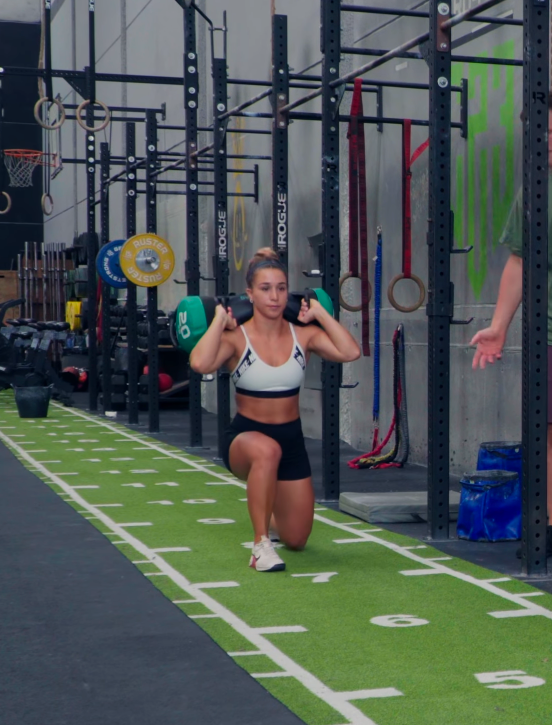

Why Do People Compete in HYROX?
People enjoy and stay motivated more easily when they have an event to train for. This is especially true in HYROX because often the entire gym will have a shared goal(s), or at least a very similar goal; creating a sense of community and comradery.
Competing also gives people a clear direction and purpose; and creates a target to strive for. People generally like to perform well too, as it makes them feel and look good; whereas performing badly, especially when you are representing your gym, is likely to make you feel bad.
Building a sense of competence is also a key motivator. In addition, signing up to an event, and having the ability to compare your times and results to your previous bests, and other competitor’s around the world, provides a tangible way to measure performance, which increases competitive motivation.
There are many other reasons that people compete, that they might not even be aware of. The excitement or even mild stress of an upcoming event, can produce hormones and neurotransmitters in the brain and body that fuel motivation and energy.
Competing can also change how people see themselves. People who compete are more likely to feel and identify as an athlete, as opposed to someone who goes to the gym to exercise. This in turn can lead to long term adherence to exercise.
How Do You compete in a HYROX Event?
If you want to compete in HYROX, you need to register.
The events tend to get full quite quickly however, so don’t hang about too long if you see a race in a location that suits you.
You can register on the official HYROX website.
Choose Your Event – Select a city and date
Select Your Category – Decide whether you’ll compete solo, in a doubles team, or as part of a relay.
Select your age range - this is in brackets and will be for your age on the day of the event, or the average age of you and your partner for doubles, or for your team if you are competing in a relay.
Complete the Registration Form – Provide your details and any required information.
Make Your Payment – Secure your spot by paying the entry fee.
Prepare for Race Day – Train so you are ready for the big day!
Arrive on the day - allow plenty of time for parking and travel, as the event is likely to cause some traffic in the local area. Take a towel, change of clothes (including some warm clothes), and plenty to eat and drink. Many people also bring along their own gym/weightlifting chalk, to improve their grip.
Try to avoid making some common mistakes during your first competition; these include - poor pacing, not understanding the rules properly, poor hydration, poor nutrition (pre, during and post competition), and not warming up.
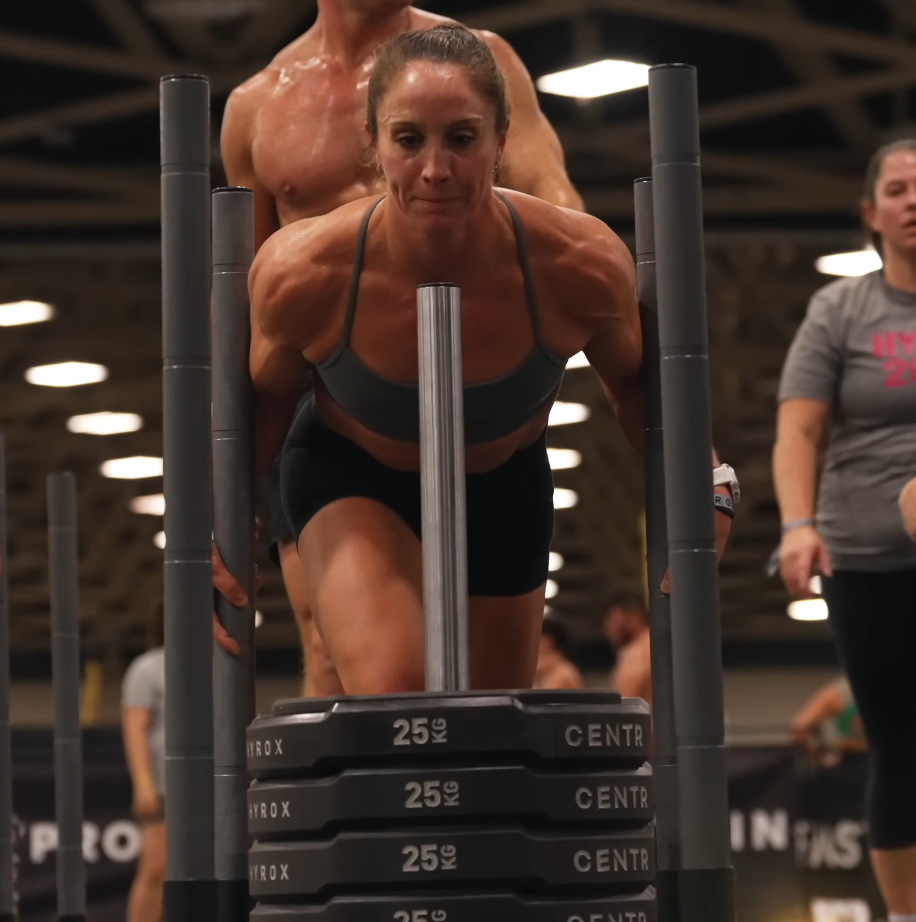

How Much Does a HYROX Event Cost?
The cost of entry varies depending on the category and location.
However, at the time of writing, general price ranges are:
Individual Open & Pro Categories: £90–£140 per person.
Doubles: £50–£100 per person.
Relay: Around £46–£80 per person.
Sometimes prices will increase the closer the date is.
Other HYROX FAQs
Are There Cheaper Alternatives to HYROX?
There are a number of budget friendly alternatives to HYROX. Many local gyms, including HYROX affiliated facilities, will have fitness competitions and there are a wide range of obstacle races to consider as well as online virtual fitness challenges and competitions that you can take part in.
Search online for “fitness competitions UK” to find an event that is similar to a HYROX race. Similar competitions are hosted by organisations including Farm Fitness, Conquer Fitness and Turf Games.
Body Pump, Boxercise and circuit classes develop fitness in a way that is comparable to HYROX, and gyms that offer these classes are often substantially cheaper than HYROX-affiliated gyms. In terms of "hybrid fitness", any gym or exercise programme that develops endurance, strength, power and (ideally) flexibility & mobility; would be considered hybrid training - the concept that HYROX was founded on.
What Does "AMRAP" Mean?
Often used in functional fitness classes and gyms, "AMRAP" stands for "As Many Reps As Possible". This normally relates to a specific set of exercises, with a given time limit.
For example, an "AMRAP Workout" could be:
10 minutes of this set sequence of exercises, repeated until the 10 minutes is up:
- 10 burpees
- 20 squats
- 10 press ups
- 15 crunches
The idea is to repeat the sequence of exercises as many times as possible, resting only when needed. This is a time efficient, high intensity form of exercise that is very convenient and practical.
What Does "WOD" Mean?
"WOD" stands for "Workout Of The Day". A term popularised by CrossFit but also used in HYROX gyms and other functional fitness facilities, it is a daily workout, that is usually distinctive or unique to that specific day. It is usually set by a gym owner, a coach or it could be published on a specific website or social media account each day. WODs help keep training varied and exciting, and give gyms and communities a shared programme and goal.
What is a Good HYROX Time?
For most recreational HYROX competitors, the overall average finish time for all solo events is around 1 hour and 30 minutes. Remember that goals should ideally be individual and focus on personal progression rather than comparison. This is especially true for beginners and first time HYROX competitors. Whilst a time of 1 hour and 10 minutes might be a goal for one person, just finishing the event or course could be a great goal for someone else.
Average HYROX Finishing Times (at the time of writing)
Open Men: ~1:26:42 to 1:35:00
Open Women: ~1:30:31 to 1:38:02
Pro Men: ~1:22:44 to 1:30:41
Pro Women: ~1:27:03 to 1:31:22
What Should You Eat Before HYROX?
The ideal pre-HYROX nutrition protocol will vary per individual.
However, as a general guide:
- 3-4 Hours Before HYROX: Eat a balance meal with carbohydrates, protein, healthy fats and fluid before a race or class. Oats/porridge, with a banana and peanut butter could be a good choice for some people, but try and eat something that you are used to eating; so you are sure you are able to digest the meal without any major issues.
You can drink a sports drink, or water depending on your preference. Some people prefer to sip a drink continuously during the period before exercise, rather than drinking a glass of water etc at each meal. - 1 Hour Before HYROX: Eat a light snack, such as a banana or a granola/oat bar.
- 30 mins Before HYROX: If you still feel hungry, a really small snack such as half a banana or a sports gel can be consumed. Avoid any heavy, high-fat or high fibre foods.
Consult with a nutritionist if possible. Be wary of trying new foods or drinks before exercise, and always introduce them gradually and trial any nutritional protocols before an important race or event. Stay hydrated before, during, and after an event or session. According to research adding a pinch of salt/sodium to water can make it significantly more effective at maintaining hydration.
How Many Calories Does a HYROX Class Burn?
As with any form of physical activity, the amount of calories burnt during a HYROX event will depend on the weight and fitness level of the participant. Having said that, most participants can expect to burn between 800 and 1,500 calories per individual event - or class that closely replicates a HYROX competition.
Conclusion
HYROX provides a measurable challenge and a close knit, like-minded community that provides support and comradery. With a blend of cardiovascular and functional strength exercises, it has a widespread appeal. Whether you’re a football player looking to develop a superior level of fitness with minimal risk of injury, or you’re an office worker looking to lose weight; HYROX can help you to reach your goals.
The range of accredited and affiliated gyms worldwide, and the global ranking/measuring system, provides a platform for people to benchmark and track their progress providing additional motivation and immediate feedback.
With a relatively low barrier to entry in terms of fitness and technical proficiency, HYROX can produce dramatic results in a short space of time. Whether you are looking to improve your fitness, physical appearance, wellbeing and/or mental health, HYROX is a great choice.
For more information, consider following the YouTube channel of a HYROX expert and/or athlete. For example, Lucy Davis Fit, Kristi O\'Connell and The Progrm have lots of tutorials and informative HYROX videos.
At Net World Sports, we supply a wide range of HYROX workout equipment to gyms and recreational athletes, including kettlebells, wall balls, weighted bags, rowing machines, plus much more! See our full range of FORZA gym equipment - great quality HYROX and fitness equipment at competitive prices.
- 2 x Cast Iron Kettlebells [16kg or 24kg in Pro bundle]
- 1x Power Weight Bag [10kg or 20kg in Pro bundle]
- 1x Wall Ball [4kg or 6kg in Pro bundle]
- Precision-cast steel kettlebells
- Easy-to-clean PVC exterior sandbags
- Specially designed bundles for Hyrox-style training
- Effective for enhancing strength & fitness
- All equipment is marked with both metric and imperial units
- 2 x Cast Iron Kettlebells [24kg]
- 1x Power Weight Bag [20kg]
- 1x Wall Ball [6kg]
- Precision-cast steel kettlebells
- Easy-to-clean PVC exterior sandbags
- Specially designed bundles for Hyrox-style training
- Effective for enhancing strength & fitness
- All equipment is marked with both metric and imperial units

